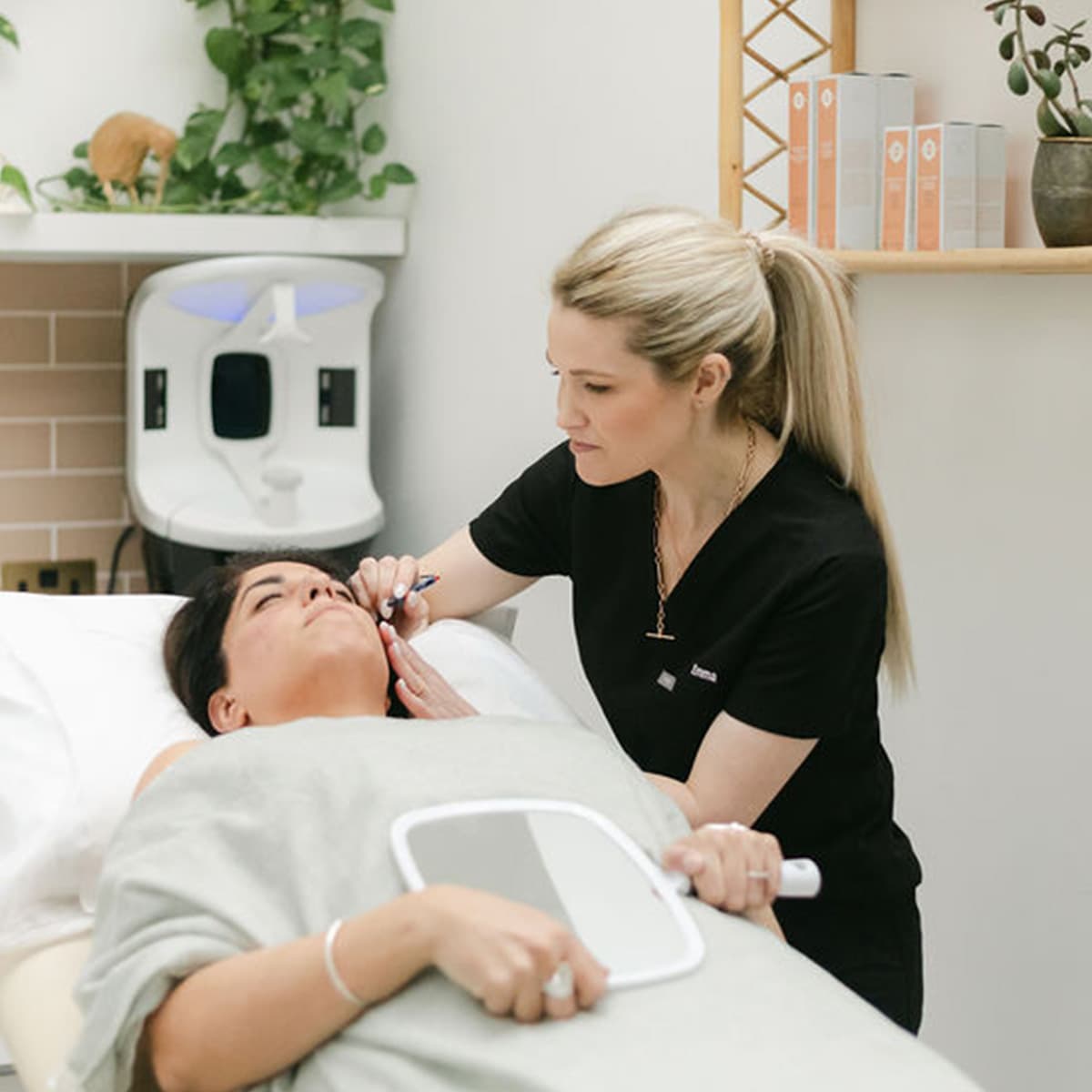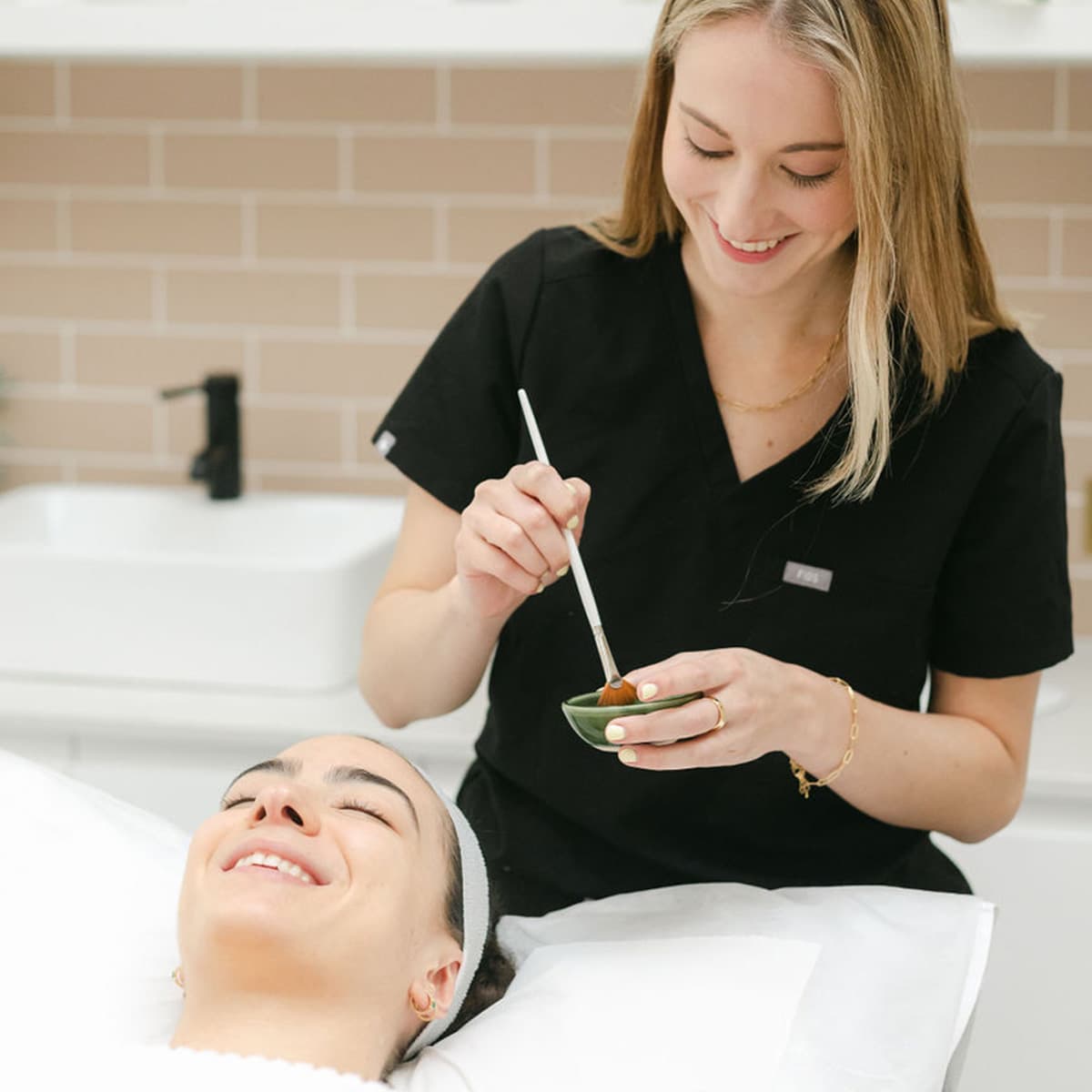Welcome to L’Atelier, a premium aesthetics clinic in the heart of Harley Street.
At L’Atelier Aesthetics we’re committed to bringing the most advanced and effective aesthetic and wellbeing treatments to clients from our state-of-the-art skin clinic at 101 Harley Street, Marylebone, London. From natural rejuvenation to skin expertise and vein treatments, we have everything in place to help you look and feel better than ever. Our treatments, such as microneedling and peels, are designed for your face, body and skin, and we also offer a boutique of products where you can get the very best care for your skin in one place.

Led by the expert hands of Dr. Brennand, this exclusive pod offers a range of transformative procedures including Botox and dermal fillers. With an unwavering commitment to excellence, Dr. Brennand combines artistry and expertise to deliver natural-looking results that enhance your unique beauty. Step into our world of aesthetic refinement and let L’Atelier Injectables unlock your true potential.


Within this tranquil sanctuary, our dedicated aestheticians Emma, Bronte & Kate work their magic, specialising in enhancing your skin’s radiance through a variety of advanced procedures. From revitalising peels to transformative microneedling, trust the L’Atelier Skin Pod to bring out the best in your complexion. Step into this oasis and embark on a transformative journey towards a healthier, more vibrant you.


Welcome to the L’Atelier Wellness Pod, where we prioritise your well-being. Indulge in rejuvenating treatments like our signature L’Atelier facial, a traditional, relaxing experience designed to refresh and restore. You can also enjoy revitalising treatments such as lymphatic drainage facials or a revitalising IV infusion. Discover a sanctuary dedicated to enhancing your overall wellness. Relax, recharge, and restore your vitality in the L’Atelier Wellness Pod.











Your feedback is always important to us, as it helps us to improve our systems and processes in our continual pursuit of excellence. If you have any suggestions, comments, or concerns please get in touch.
L’Atelier Aesthetics is based within 101 Harley Street, at the centre of London’s renown medical district. As part of the 101 Harley Street team, we share the same commitment to clinical excellence, safety, and patient care, while specialising in advanced non-surgical aesthetic medicine.
Our team of experienced aesthetic doctors provide evidence-based treatments designed to enhance skin health, restore balance, and deliver natural, refined results.
While 101 Harley Street also houses The Wright Practise and a world-class Day Surgery Unit, L’Atelier Aesthetics focuses exclusively on non-surgical treatments. We offer a calm, medical-led environment for patients seeking visible, yet subtle rejuvenation in the heart of London.
From your first consultation through to post-treatment care, our priority is to ensure that you feel safe, informed, and supported throughout your experience with us.
At L’Atelier, we combine medical expertise with genuine warmth. Every treatment is delivered diligently by highly trained professionals who love what they do. You’ll experience Harley Street standards in a friendly, welcoming environment.
Your journey begins with an in-depth consultation, which will be defined depending on the treatment or the concerns you have spoken to us about. If you are looking for a non-surgical treatment, Dr Duncan Brennand will guide you through the options available to you. If you are looking for a skin treatment, we can utilise advanced imaging and professional assessment using a Visia skin analysis device. Our experts then create a tailored plan based on your skin type, goals, and lifestyle. We’ll guide you through every step so you feel informed and confident in your decision.
We’re located at 101 Harley Street, Marylebone, London W1G 6AH which is easily accessible from Oxford Circus, Regent’s Park, and Bond Street stations. After a short walk or taxi ride, you’ll find us inside our elegant 101 Harley Street, which houses L’Atelier Aesthetics, The Wright Practice and a cutting-edge 101hs Day Surgery Unit combining an array of industry-leading aesthetic and medical treatment offerings, in the heart of London’s most famous medical district, Harley Street. Parking and these nearby underground stations make visiting simple and stress-free.
Prices vary depending on your chosen treatment and the number of sessions required. You can view our full pricing and treatment list on our Pricing Page or speak directly with our team for personalised recommendations. Transparency is central to everything we do, we will discuss all pricing during your thorough consultation, there are never any hidden costs.
At 101 Harley Street, our focus is on proactive healthcare that prioritises patient well-being above all else. We believe in delivering tailored, high-quality healthcare that combines compassion, respect, and exceptional surgical and medical expertise. Our commitment is to ensure the care and improvement in our patients’ lives, through personalised delivery of expert medical services.

